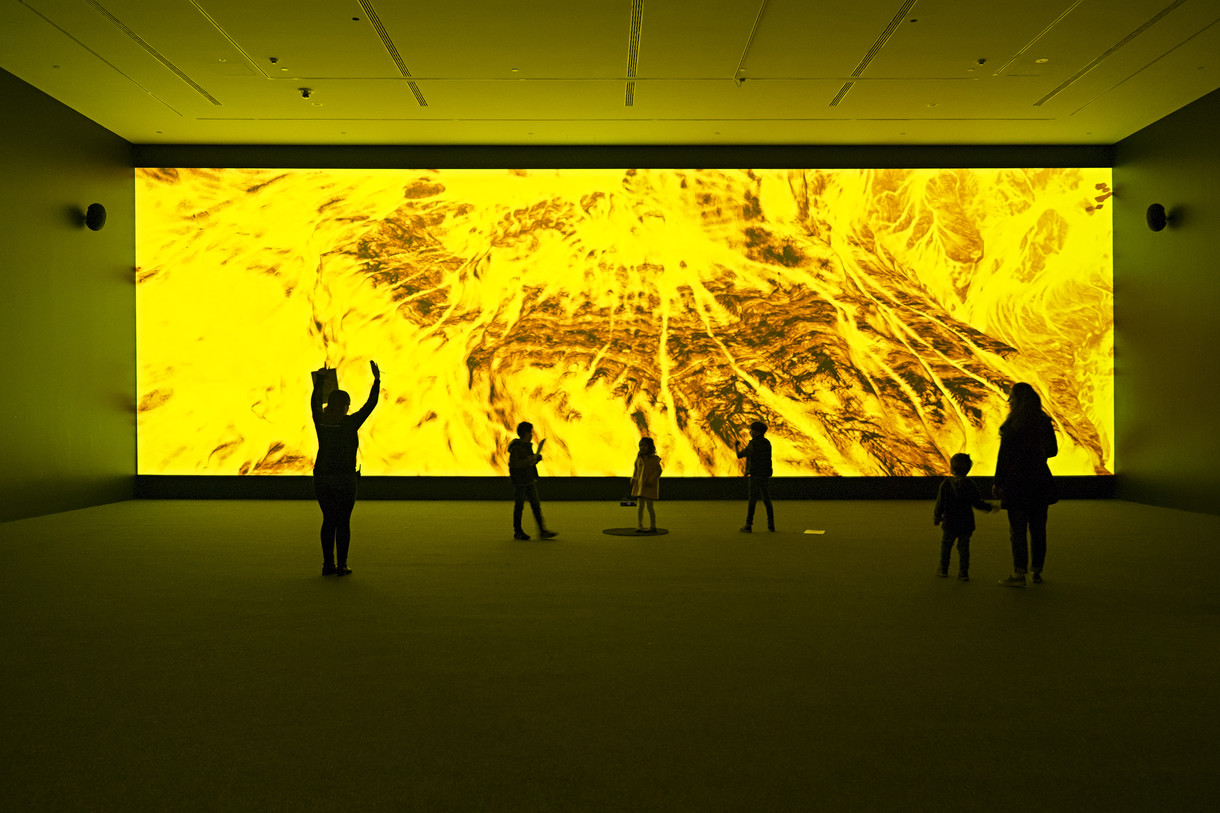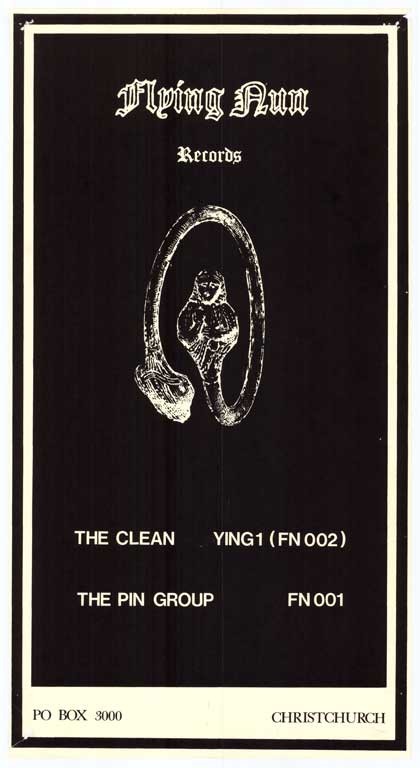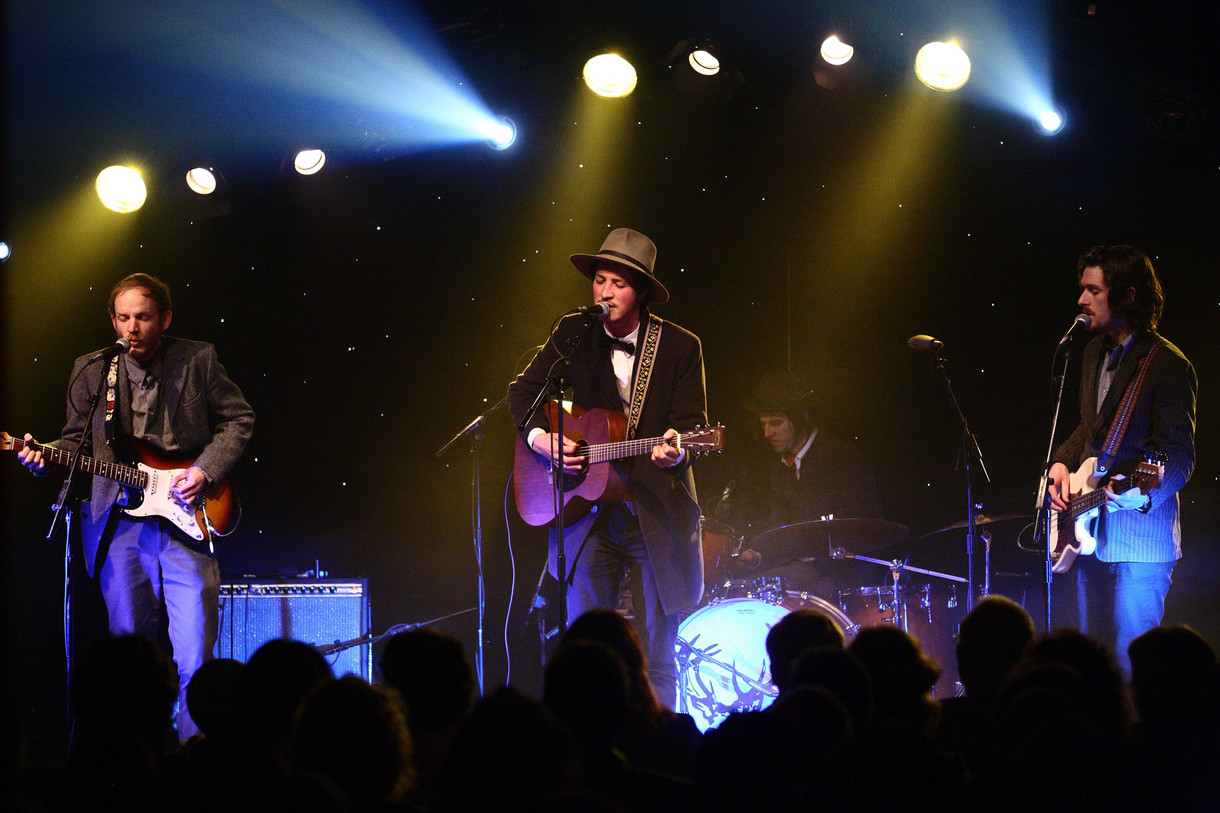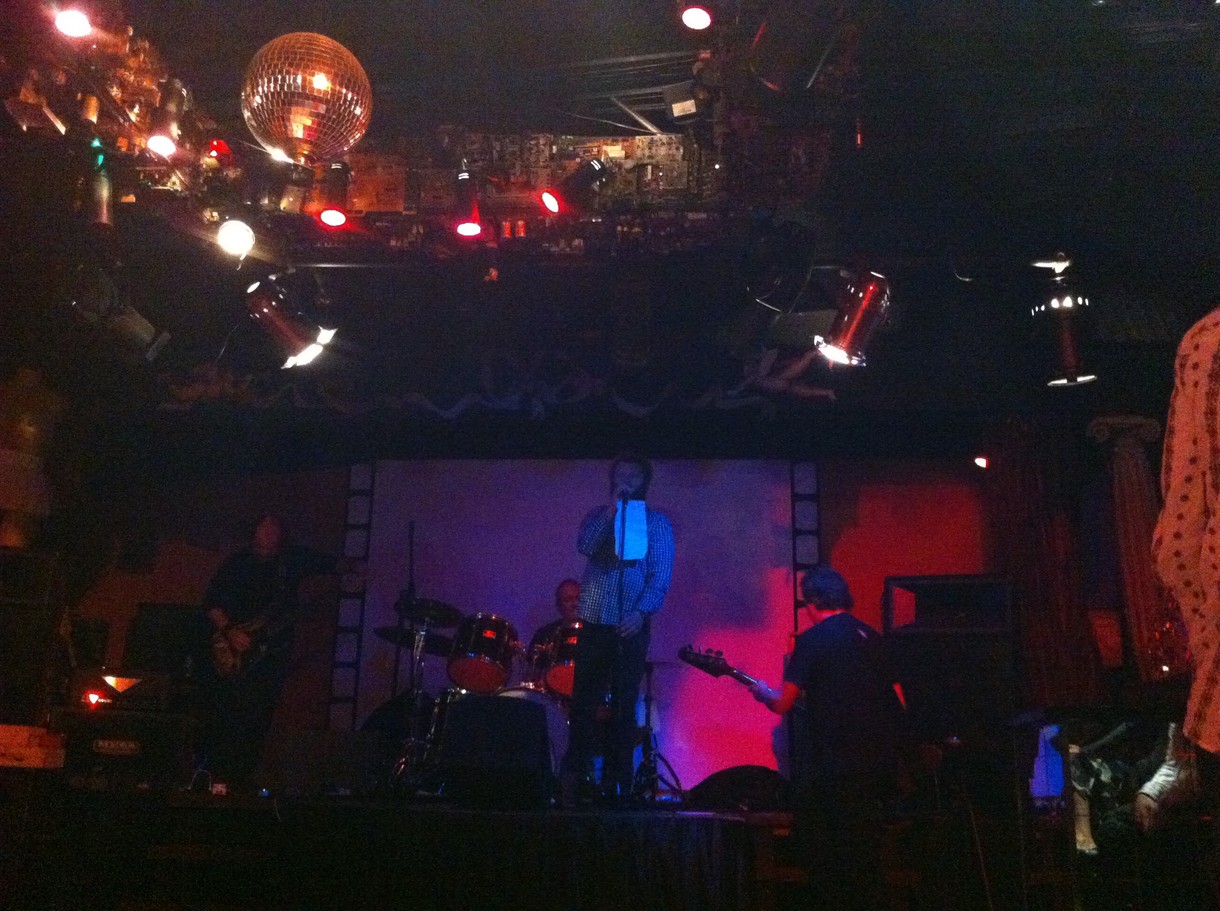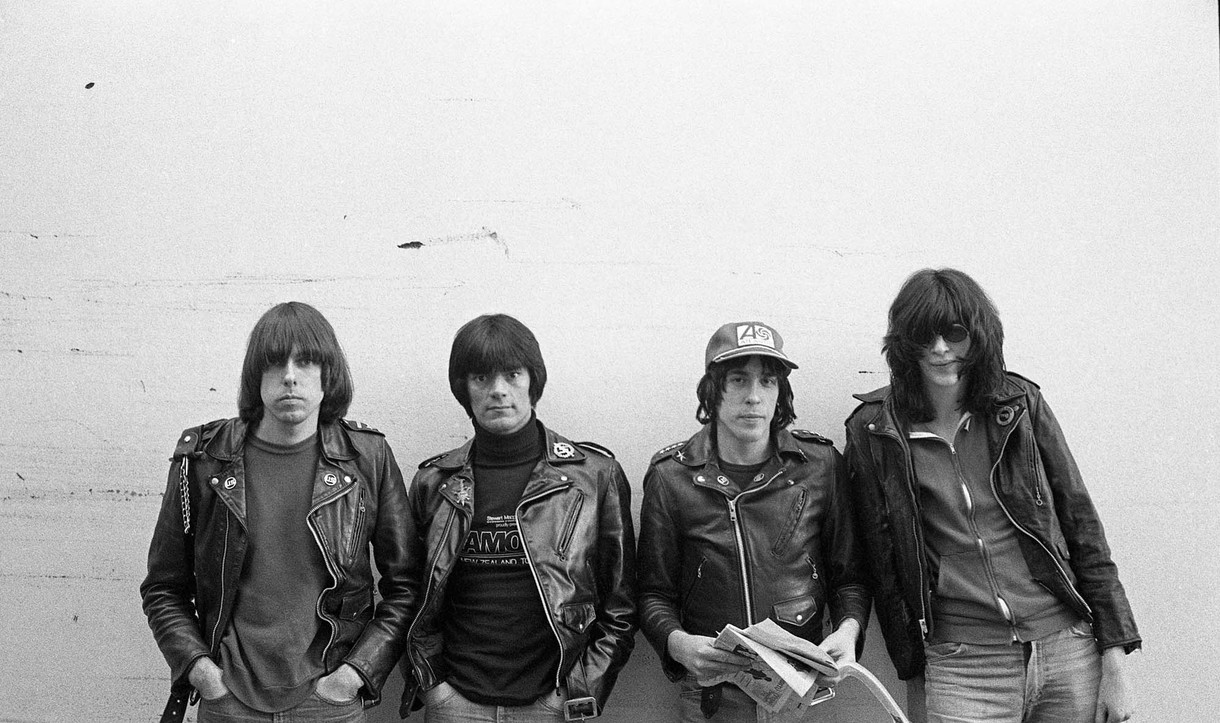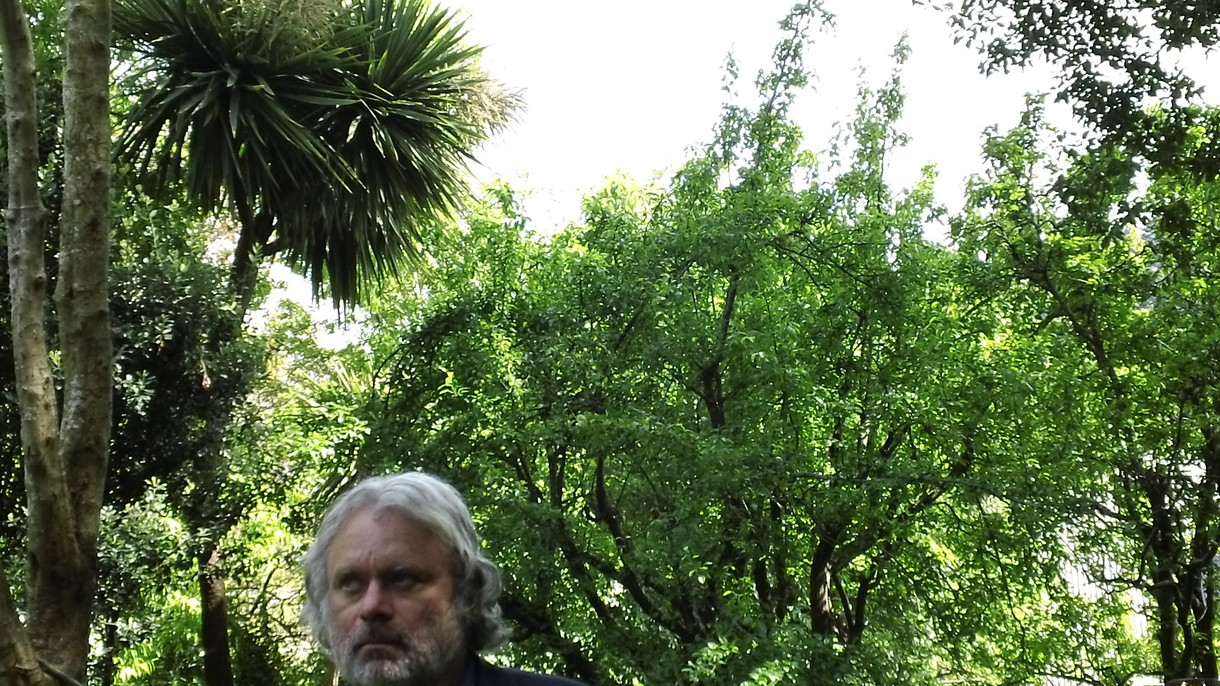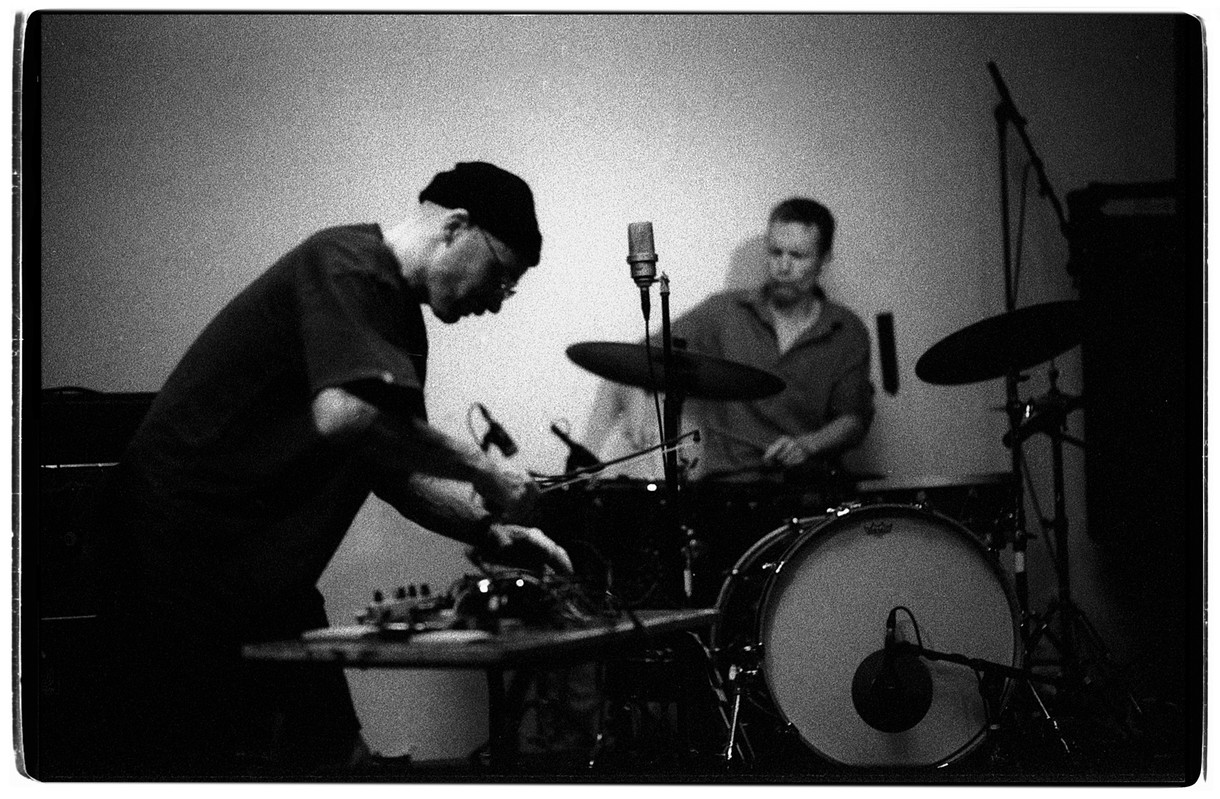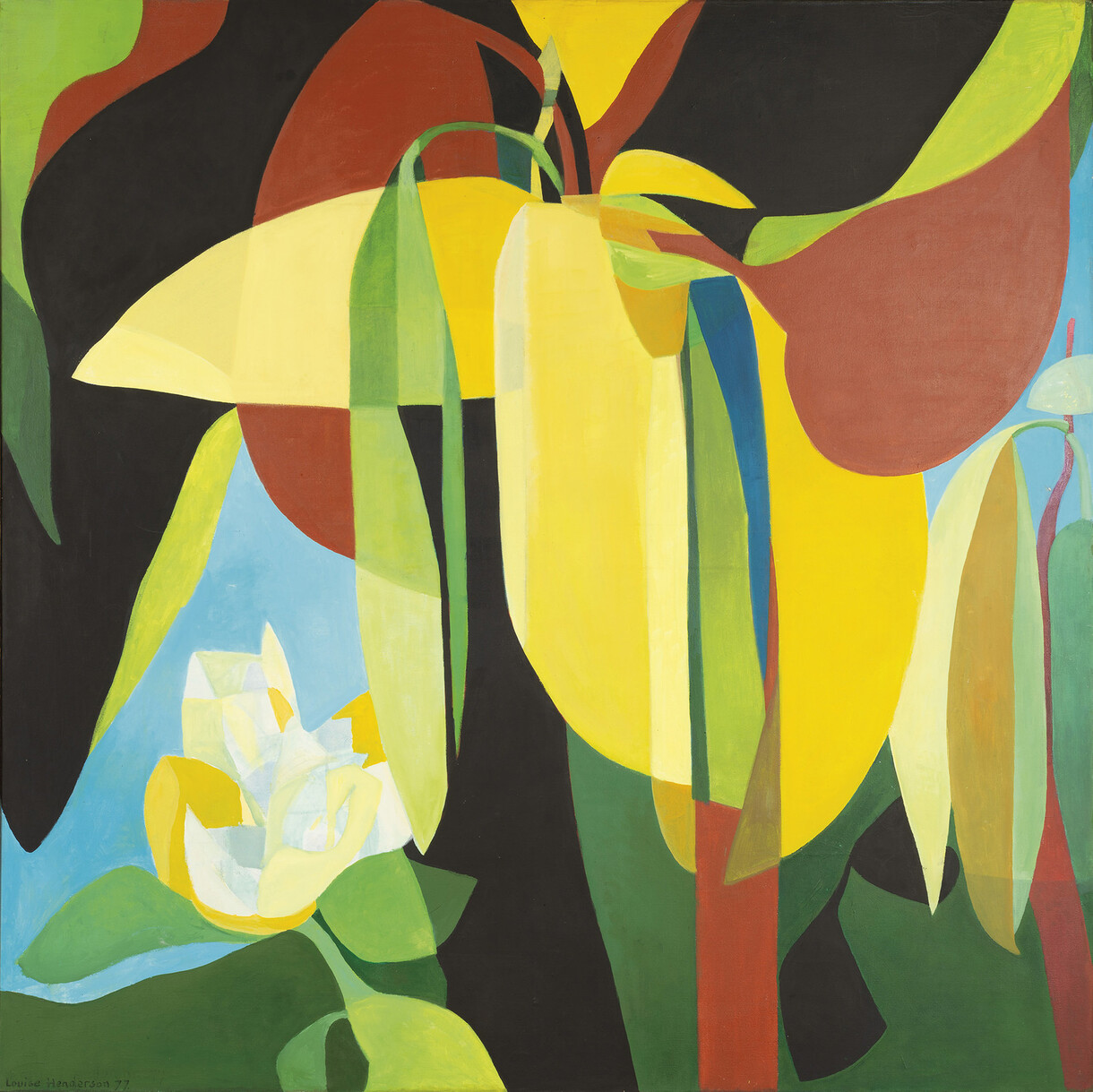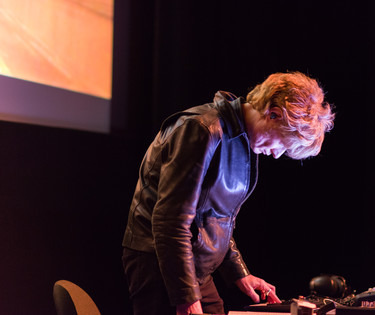
J.G. Thirlwell
J.G. Thirlwell
Interview by Jo Burzynska
J.G. Thirlwell is man of many monikers and even more projects: from the epic avant-garde electro-rock of his thirty-five-year Foetus act to scoring orchestral work; creating sound installations to writing cartoon soundtracks. Fellow sonic artist, Jo Burzynska caught up with the Melbourne-born but long-time New York-resident composer/producer/performer at the Gallery before the opening performance of his first ever New Zealand tour.
Jo Burzynska: While you started out studying art, by 1980 you were making music. What inspired you to make this transition?
J.G. Thirlwell: When I left school I was interested in studying graphic design, but I was always obsessed with music. I graduated from high school pretty young—when I was 16—so art school was a rite of passage. I spent a couple of years there and arrived at the conclusion that I wanted to do something in music, but I didn’t know what that would be. At the time —this was in 1978 and I was eighteen-years old—I was swept up with punk rock and post-punk so I moved to London, which seemed to be the epicentre of where things were happening.
I always loved art and I continue to be very interested in it. It’s not like I cut off my art career to work on music. There’s always been ways of expressing that, firstly through my record covers. I’ve also done magazine work, covers for other people and even some sculptures. And then in the last ten to fifteen years, I’ve been working in sound art as well. There was never really a cut-off point.
But after I started making music and playing in a band in a democratic environment, I realised very quickly that this wasn’t what I wanted to do. I wanted to make records, which is different from being a musician who becomes accomplished on their instrument or goes out and tours: the record is the artefact—an art object that’s a multiple of which everyone can have an original.
That continued in my process. There’s a through-line in a lot of the artwork that I do and in the names of the records: all the Foetus album titles are four letters and one syllable and that’s continued. I still consider what I do to be art.
JB: You seem to juggle an amazing quantity of projects at any one time, and they appear to be building in both number and diversity.
JGT: I guess I’m restless and like to have a lot of things going on at once. Everything seems to coexist in different stages of production and I tend to bounce back and forth between projects, sometimes three in one day. I’ve never been one to concentrate on just one project...
It’s also the nature of what I do: as a self-employed artist you’re walking a financial tightrope and tend to take on a lot of things. I might be doing commissions and commercial jobs and have an album I’ll be working on for four years, or be invited to do a one-night-only installation piece. I now also work on two TV shows. I’m interested in a lot of different areas: no one thing can quench my thirst.
JB: Many people will have first encountered your work through your Foetus project, which, bar one hiatus, has been going for over three decades now. How has that evolved and where do you see it heading?
JGT: The first Foetus album came out on 1 January 1981, and it was my primary project for many years. When I first started it I was very prolific and changed the name many times, always with Foetus in the title—Foetus Vibrations, Scraping Foetus of the Wheel, You’ve Got Foetus on Your Breath, Foetus Interruptus and various other things. After doing that for ten years I settled for just Foetus, or Foetus Inc.
The sound in Foetus evolved a lot from album to album. It started to get increasingly instrumental, so I farmed off some of the instrumental stuff into another project, Steroid Maximus [Thirlwell’s hybrid avant-garde jazz/big band/exotica act]. I want to do another Foetus album, but it’s been a while and it’s changed in nature over the last fifteen or so years, becoming more psychedelic and symphonic. I’d like to do the next album with an orchestra, for which I’ll do all the arrangements in advance. It will probably be the close of a chapter.
There are people who know me through Foetus and those who know me through other areas of my work and don’t know Foetus at all. I kind of like that—not having to carry around 100 per cent of my work with me all the time.
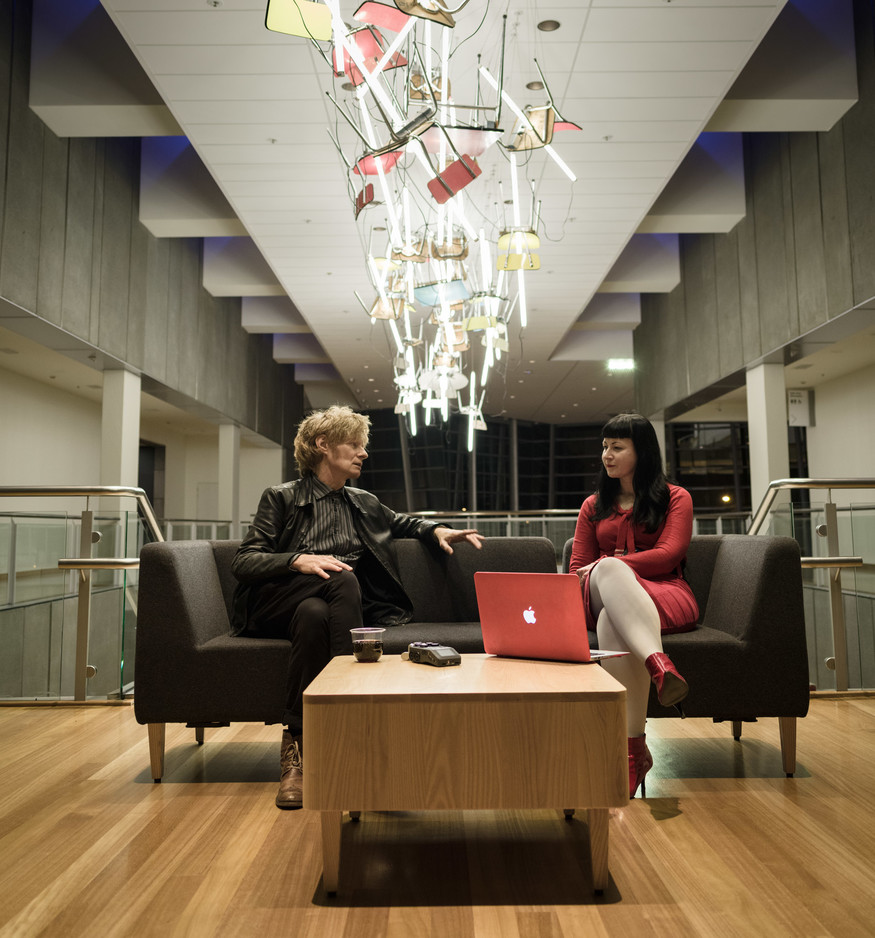
J.G. Thirlwell interviewed by Jo Burzynska, 2016
JB: You’ve remixed a wide array of artists, from John Carpenter to the Red Hot Chili Peppers. How do these and other collaborations fit within your overall creative vision?
JGT: With remixes, the artist is often not there with me and doesn’t comment. I like to try to do a remix a year to try out things that I may not have an avenue for in my own work. The level of collaboration is different on every project. I wouldn’t say I’m the best collaborator in the world as I’m a bit of a control freak, so I tend to steer the ship!
However, The Venture Bros. [the US animated adult television series] is a very good collaboration as it reins me in but also gives me freedom. And I have good communication with the director, Chris McCulloch. It’s a collaboration that has really pushed me musically to do things that I would never otherwise have done. It’s made me better and been really fruitful. When you have to make half an hour of music that sounds like John Williams, you’d better sound like John Williams. But when I get a directive like that, it’s going to be my version, which is bigger and badder and more demented!
JB: Writing music for orchestras has become a growing part of your work. Do you have any conventional musical training?
JGT: No, that’s something I do on the fly. The first instrument I studied was cello, but I only lasted a few months. I always had problems with sight-reading, which was the same when I learned percussion. Then I stopped learning instruments, bought some synthesisers, started teaching myself and went down that route.
I’ve gone through a lot of technological eras [from tape loops and cassette collages, through samplers to computer programming]. But the technology that’s actually most interesting to me now is creating scores, which is a more ancient technology, but a technology nonetheless. It’s exciting for me to be able to create things with that system, which are then filtered down through the fingers of virtuosic musicians.
JB: I see you’ve been re-scoring electronic and sample-generated music for traditional instrumentation, which has resulted in performances such as a chamber ensemble version of your experimental instrumental project, Manorexia.
JGT: That’s been an evolution as well. One of the earlier things I did like that was a commission from UCLA to re-voice and rescore the Steroid Maximus album, Ectopia for an 18-piece ensemble. That’s when I started to get into the idea of re-voicing things I’d created in the studio with electronic, sampling and live instruments.
That process continued to evolve and when I started working on my Manorexia project again I did re-voicing. But then I figured out some instrumentation—two violins, a viola, a cello, piano, laptop and tuned percussion—that really worked as way to transform the material, so I started thinking about just writing directly for these.
Then I was commissioned by Kronos Quartet to write a string quartet, which really excited me. There seems to be a lot that I can do with two violins, a viola and a cello, so I’ve written a few pieces for Kronos, as well as my own standalone pieces to continue my explorations. There’s still a lot that I want to do with the string quartet as I chip away at it.
I haven’t learned conventional music so I don’t have to unlearn it and come to things from a slightly different viewpoint. I unearth things through my experience working with musicians. Sometimes that works really well as it makes the music unique. However, it can make my music much harder to play, as while a lot of trained musicians think about the ease of playing something, I don’t write like that.
JB: With its brass fanfares, sweeping strings and dramatic arrangements, much of your music has been characterised by its big bombastic sound. What draws you to this?
JGT: Maybe it excites me. I did an album that came out in 2005 called Love. I wanted it to be really sparse and restrained, and worked on a bunch of pieces in that direction. Then I realised that I had a different reaction, but had to give myself permission to let the bombast in. I think it’s part of my nature and part of what I’m drawn to. Fortunately I have some excellent outlets for that, such as the Venture Bros.
JB: It’s through your soundtracks for the Venture Bros. that a whole new audience has been introduced to your music. How did that arise and what’s it like making music for a cartoon?
JGT: That came about because a friend of the director turned him on to Steroid Maximus when he was working on the pilot script for the series. When he heard the music it gelled with him as the perfect soundtrack for the Venture Bros. universe.
They tracked me down and asked me if I was interested in scoring it. At first I said no, so they asked to licence some of my music to see how it worked; when they came back again I said I’d give it a try. What was nice was they were coming to me for what I do anyway, and it was an opportunity to do something I’d never done before. I find it exciting to step into a world I’ve never experienced.
The first year was actually very difficult as I was overwriting, still trying to negotiate the Venture Bros. universe and create a musical vocabulary for the show. But I got better and could change moods on a dime and become more nuanced, which has been good in informing my own music and other scoring. So it’s been a good experience and there are people that know me from this who don’t know the other things I do.
JB: Can you tell me more about the electroacoustic work, Cholera Nocebo, which you’re performing on this tour?
JGT: It came about at the behest of Mats Lindström from Elektronmusikstudion in Stockholm who invited me to play at the Arts Birthday Party Festival in Stockholm. That made me think about how I could create something with an elastic structure and some acoustic elements that was malleable. It’s something that develops, contracts and expands depending on the venue.
Another important part is the projection that I play in front of, which was made by a friend, Gia who I’d drive home in Long Island down the expressway endlessly. After doing this so many times I suggested she film it, so we had all this material and when Mats asked me to play, I thought it would be good to use for this. There’s the footage of the Long Island expressway and it ends with other footage I put together with another friend, of New York after Hurricane Sandy when Lower Manhattan was blacked out.
JB: Sound art is something in which you’ve also been involved more recently, through the likes of the freq_out installation. Can you tell me more about this project and your interest in this area?
JGT: Freq_out started in about 2003 and was conceived and curated by Carl Michael von Hausswolff who invited twelve sound artists and composers to contribute. The concept behind the project is splitting the frequency spectrum into twelve discrete parts, each artist working within the frequency spectrum they’re given without bleeding into the next frequency. It can be field recordings, compositions or just sounds within that spectrum.
We’ve done it twelve times now, so it’s reached its full cycle and everyone has worked with each frequency. The idea is that it’s an endless piece in which each piece moves independently, so in the best of situations it’s a multichannel piece that reacts to the environment in which we create it.
It’s been done in lost of different environments. The first was in Copenhagen; we’ve done it in Chiang Mai; Morocco; at the Site du Parti Communiste, Paris; in underground tunnels in Berlin; an old strip club in Belgium; and most recently in sewers of Vienna. We respond to the place, and that response is both how it works acoustically and what the space itself talks about.
It sounds like a simple idea but there are so many different things you can do, especially creating an environment where people can come into a space in which they’ve perhaps never been and transforming that space with sound.
I’m also really interested in environmental multichannel work. Someone can go in for as long or as short a time as they like and walk around in it, absorb it and take it in that way. So I’ve done some solo ones of those myself.
JB: Having worked in so many genres of music, are there any that you feel particularly connected with at present?
JGT: I’m really excited about what’s labelled new composition—the contemporary classical/post classical scene—because there’s such an amazing pool of players and ensembles out there. I’m excited about getting my works out through these people and creating new works. There are lot of different combinations of instruments I’d still like to use: sometimes there’s not an ensemble with that range of instruments. I feel there so much work I could do and I’m hungry to work in that field more.

J.G. Thirlwell performs at the Gallery on the opening night of his first ever New Zealand tour.









